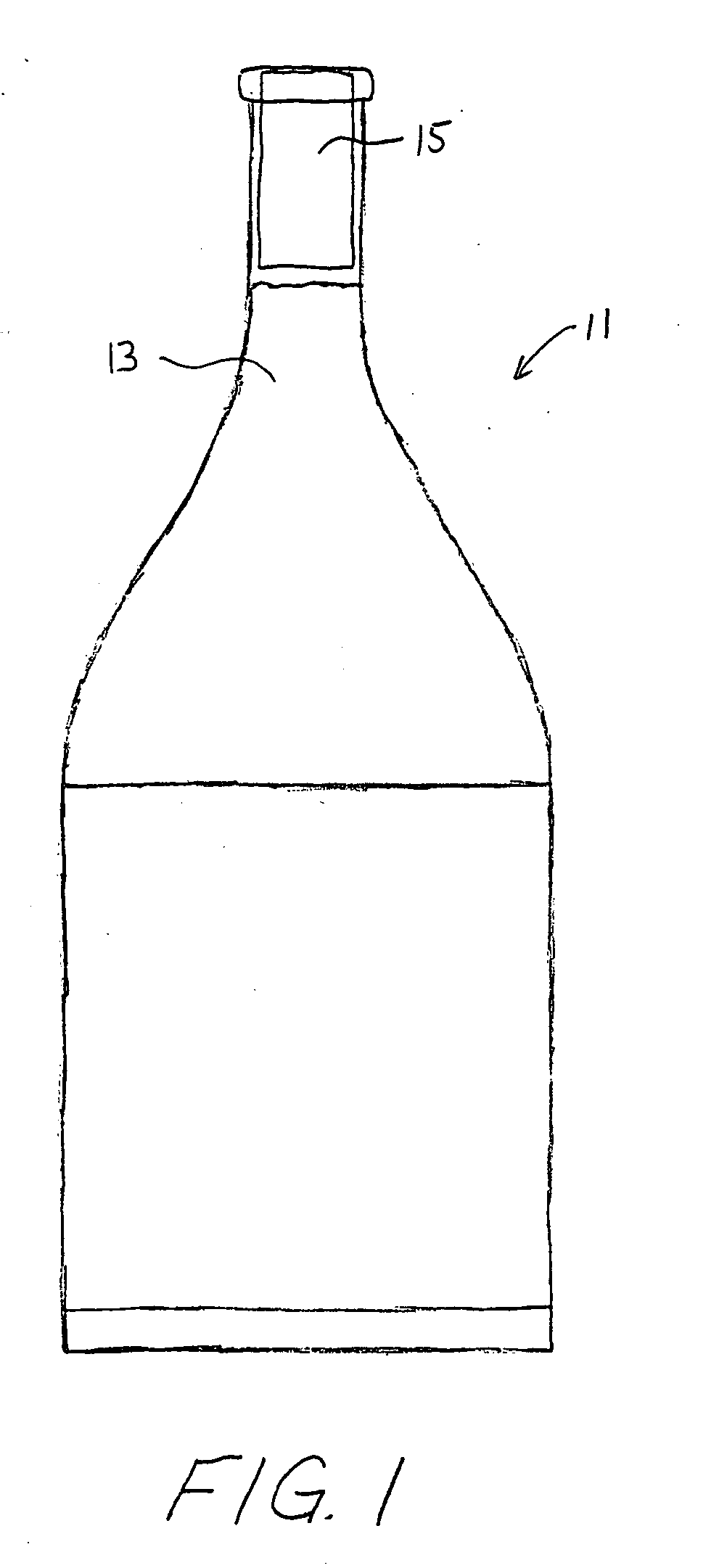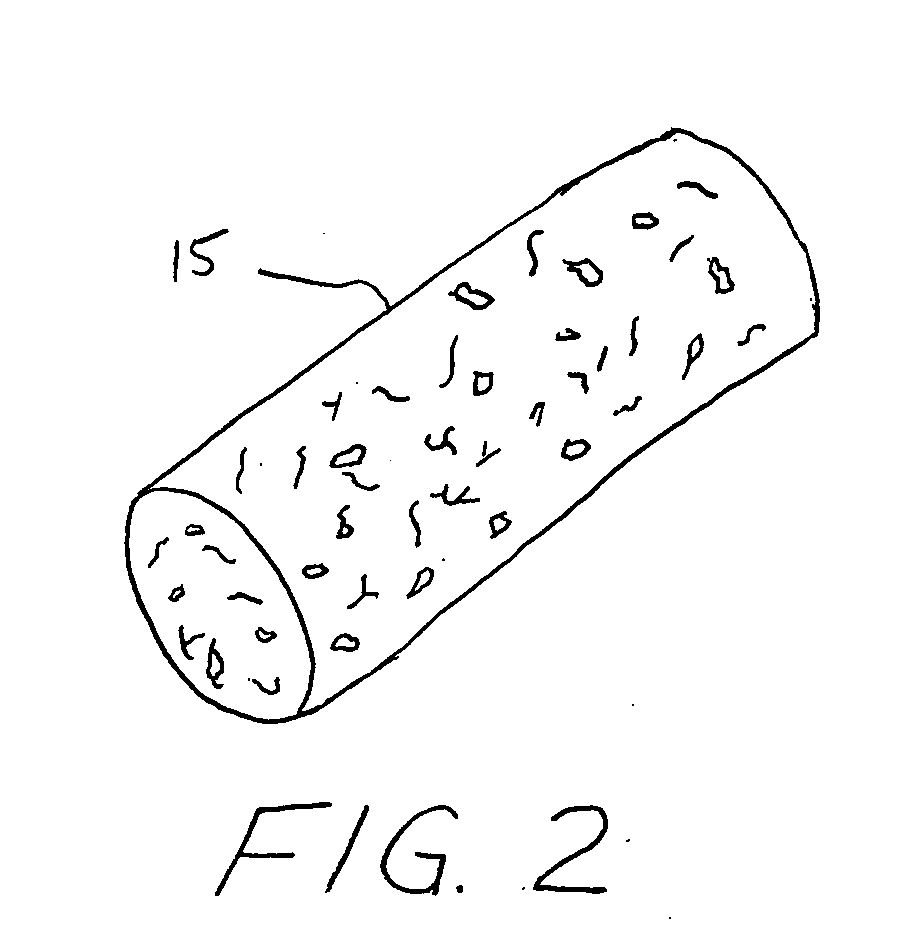Synthetic cork compound
- Summary
- Abstract
- Description
- Claims
- Application Information
AI Technical Summary
Benefits of technology
Problems solved by technology
Method used
Image
Examples
example 1
[0034] A synthetic cork compound was formulated using a polydimethylvinylsiloxane polymer of about 40.7 weight percent and a fumed silica filler of about 27.1 weight percent. A high vinyl silicone polymer of about 1.3 weight percent was added to provide enough active sights for silicon hydride to react with the polymer during cross linking. Toasted oak dust of about 1.0 weight percent and a zinc ferrite pigment of about 0.25 weight percent were then blended with the silicone polymers and filler. Although many different pigments could be used, the zinc ferrite pigment helps simulate the appearance of natural cork. After blending in soda lime borosilicate of about 26.2 weight percent and ethynl cyclohexanol of about 0.08 weight percent, silicon hydride of about 2.3 weight percent was added and blended. The final ingredient was chloro-platanic acid of about 0.99 weight percent. This component was added and blended well with the other components. The order of mixing the various ingredie...
PUM
| Property | Measurement | Unit |
|---|---|---|
| Fraction | aaaaa | aaaaa |
| Percent by mass | aaaaa | aaaaa |
| Percent by mass | aaaaa | aaaaa |
Abstract
Description
Claims
Application Information
 Login to View More
Login to View More - R&D
- Intellectual Property
- Life Sciences
- Materials
- Tech Scout
- Unparalleled Data Quality
- Higher Quality Content
- 60% Fewer Hallucinations
Browse by: Latest US Patents, China's latest patents, Technical Efficacy Thesaurus, Application Domain, Technology Topic, Popular Technical Reports.
© 2025 PatSnap. All rights reserved.Legal|Privacy policy|Modern Slavery Act Transparency Statement|Sitemap|About US| Contact US: help@patsnap.com


